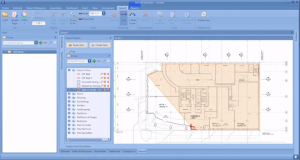How to Know When It’s time to Invest in New Technology
“Keep up with the times.”
“Don’t get left behind—try out this new construction software.”
“We’re not living in the dinosaur age anymore, so let’s not act like it!”— You’ve probably heard some variation of these statements throughout your career. You might have even heard it more often recently, as new technology emerges on the scene just about every week—if not every day.
 Does your company embrace new technology?
Does your company embrace new technology?It’s no secret that the construction world has a reputation for being old-fashioned and slow to change. But frankly, this reputation is undeserved. Maybe it applied at one point in time, but these days, to be in construction is to be in a constant state of change, whether that’s in the field or the office. Drones, BIM, modular construction, augmented reality, and other new technologies are becoming mainstream. If you use one or all of these, you know their use improves design and estimating, and helps find problems through the preconstruction and construction process. But to embrace new, expensive technology just for the sake of change can be as unhealthy to a company as doing things one way because “that’s how we’ve always done it.” Balance is key when preparing to make a massive investment that will significantly impact not just your preconstruction department, but all other departments in your company too.
So with that being said, when and why should you invest in new technology? How do you know when it’s the right time? After spending decades in the industry, we’ve come up with a few key tips to know a) when your team needs to invest in updated construction estimating software, and b) why that will benefit not only your estimating team but your entire company.
It's Time to Invest in New Technology When:
- You’re increasingly expected to turn around estimates with greater accuracy but less time
- You often realize you’re not on the same page as the project owner
- You’re ready to test software for yourself and be a champion for change on your team
You’re increasingly expected to turn around estimates with greater accuracy but less time
Older, stagnant construction estimating tools may be enough to suffice when you’re a smaller business. If there are only one or two estimators that make up your preconstruction department, you might be able to get away with doing all of your estimates in a program like Excel. But the moment you start growing, you’ll quickly find that these kinds of tools won’t be able to keep up with your demands, much less the project owner’s demands.
In today’s world, most project owners are expecting to see highly detailed and accurate estimates more quickly than ever before. A common error that sets you two or three days behind is no longer just a misstep—it could end up costing you a bid. If you find yourself spending long hours at the office to turn around estimates as fast as humanly possible, this is a major sign that you’re past due for a software upgrade.
You often realize you’re not on the same page as the project owner
But let’s say you’re not at the growth stage yet. You’re a smaller contractor and extremely selective with your bids, so although there’s still a lot of pressure to churn estimates out as quickly as possible, it’s not as intense as it might be with a larger contractor. However, you run into another problem: you bring in the latest estimate, using Excel or WinEst, and it’s not at all what the project owner needs or wants. There have been a dozen different changes since the last time you spoke, and now you have to go all the way back to the office to implement these changes. And by the time you come back, it is likely there are still more updates that need to be discussed.
When this starts happening, it’s important to evaluate whether or not your current construction estimating software provides you with the ability to make on-the-fly changes no matter where you’re at.
You’re ready to test software for yourself and be a champion for change on your team
Finally, however, the greatest sign of being ready to invest in new technology is if you’re willing to go out there and get your hands on other software programs and come back willing to present the results to your team. You don’t have to be a vice president of estimating to bring about change at your company—as long as you’re passionate and curious, anyone can try something new. Taimoor Khan, Director of Preconstruction at ERDMAN, notes that “it’s always important to have a clear vision as to why you are implementing the technology. You can’t just talk the talk, you have to walk the walk as well.”















